Pain Relief

-

Lemsip Max Cold & Flu Relief Day & Night Capsules – 16 Capsules
- For The Relief Of Flu & Colds
- Active Ingredients: Paracetamol, Phenylephrine & Caffiene
- Buy With Confidence From UK Registered Pharmacy
£6.99 Select options -

Panadol Period Pain
- Effective Relief From Period Pain
- Active Ingredients: Paracetamol & Caffeine
- Buy With Confidence From UK Registered Pharmacy
£4.49 Add to basket -
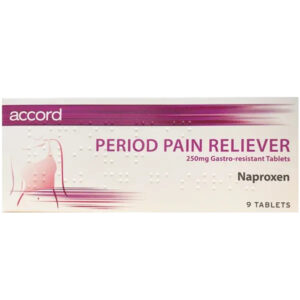
Naproxen 250mg Period Pain Reliever Gastro-resistant – 9 Tablets
- Provides effective relief from period pain in women aged 15 to 50
- For oral use
- Non-steroidal anti-inflammatory
£9.79 Select options -
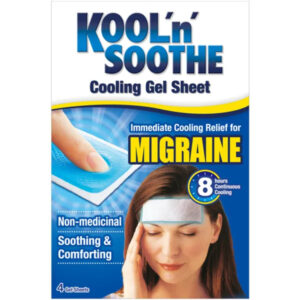
Kool ‘n’ Soothe Migraine Gel Sheet – 4 Pack
- Cooling Relief From Migraines
- Easy To Apply
- Non-Medicinal
£3.69 Add to basket -
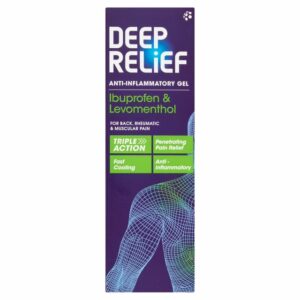
Deep Relief Anti-Inflammatory Gel 30g
- Effective Pain Relief Treatment
- Easy To Apply
- Active Ingredients: Ibuprofen & Levomenthol
£6.09 Select options -

Lemsip Cough for Mucus Cough & Catarrh Syrup – 180ml
- Dual Relief & Max Strength
- For The Relief Of A Mucus Cough
- Active Ingredient: Guaifenesin & Cetylpyridinium
£8.15 Add to basket -

Motusol Max 2.32% Gel – 50g
- Reduces inflammation
- Diclofenac 2.32%
- Effective pain relief
£7.99 Add to basket -

Motusol 1.16% Diclofenac Gel – 100g
- Diclofenac 1.16% (as diclofenac diethylamine)
- Targeted pain relief of acute strains and sprains
- For adults and adolescents aged 14 years and over
£11.99 Add to basket -

4head Quickstrip – 4 Strips
- Active Ingredient: Levomenthol
- Can Be Applied Whenever Required
- Buy With Confidence From UK Registered Pharmacy
£4.59 Add to basket -

Sudafed Congestion & Headache Relief Day & Night Capsules – 16 Capsules
- Congestion & Headache Relief
- Active Ingredients: Paracetamol /Caffeine /Phenylephrine
- Next Day Delivery Available
£6.49 Add to basket -
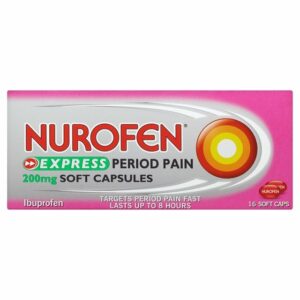
Nurofen Express Period Pain 200mg Soft Capsules (16)
- Effective Period Pain Relief Treatment
- Soft Capsules - Easy To Take
- Lasts Up To 8 Hours
£4.79 Read more -

Calpol Vapour Plug & Nightlight + 3 Refills
- INCLUDES 3 REFILL PADS
- Contains : Lavender & Chamomile
- Quickly Relieves A Blocked Nose
£9.29 Add to basket -

Deep Freeze Cold Spray – 150ml
- Soothing To Joints & Muscles
- Easy To Spray
- Buy With Confidence From UK Registered Pharmacy
£4.59 Add to basket -

Nelsons Arnicare Cooling Gel 30g
- Effective Pain Relief Treatment
- Non Greasy
- Ideal For Athletes
£6.69 Add to basket -
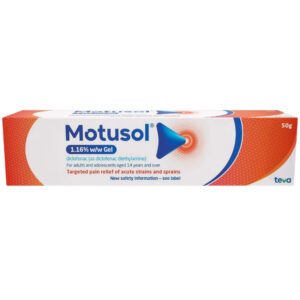
Motusol 1.16% Diclofenac Gel – 50g
- Diclofenac 1.16% (as diclofenac diethylamine)
- Targeted pain relief of acute strains and sprains
- For adults and adolescents aged 14 years and over
£4.40 Add to basket -

Deep Heat Muscle Massage Roll-on Lotion – 50g
- Soothing To Joints & Muscles
- No-Mess Rollerball
- Easy To Use
£6.49 Add to basket -

Lemsip Cough For Dry Cough & Sore Throat – 180ml
- Dual Relief & Deep Soothing
- For The Relief Of A Dry Cough
- Active Ingredient: Glycerol Citric, Lemon Oil Terpeneless, Purified Honey
£8.19 Add to basket -

Calpol Blocked Nose Spray 15ml
- Suitable For Adults & Children Over 3 Years
- Quickly Relieves A Blocked Nose
- Buy With Confidence From UK Registered Pharmacy
£4.99 Add to basket -
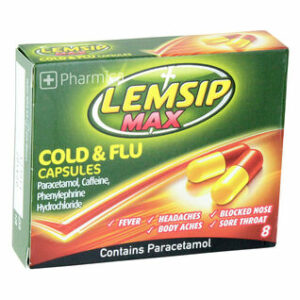
Lemsip Max Cold & Flu Capsules – 8 Capsules
- For The Relief Of Flu & Colds
- Active Ingredients: Paracetamol, Phenylephrine & Caffiene
- Buy With Confidence From UK Registered Pharmacy
£4.49 Add to basket -

Beechams All In One Liquid 160ml
- Effective Relief For Chesty Coughs
- Active Ingredients: paracetamol / phenylephrine / guaifenesin
- Buy With Confidence From UK Registered Pharmacy
£6.39 Select options -

Reliviate Aches & Joint Pain Relief 0.5% Gel – 30g
- Piroxicam prescribed by doctors for over 30 years
- Targets and attacks the pain directly
- Proven to help you get back to doing what you love
£4.99 Select options -

Ibuleve Maximum Strength 10% Gel – 50g
- Twice as much Ibuprofen as the original Ibuleve
- Easily absorbed, penetrating gel
- Fragrance-free formula
£7.99 Select options -

Voltarol Non Medicated Heat Patch – 2 Patches
- Targets back and muscle pain
- Provides 24-hour localised pain relieving heat
- Non-medicated, tablet free format
£5.49 Add to basket -

Deep Heat Muscle Rescue Neck & Shoulder Warming Cream – 50ml
- Soothing To Joints & Muscles
- Eases Everyday Stresses & Tensions
- Easy To Use
£4.99 Read more -

Tiger Balm Neck And Shoulder Rub – 50g
- Easily Applied as Frequently As Needed
- Quickly Absorbed Into The Skin
- Buy With Confidence From UK Registered Pharmacy
£9.29 Add to basket -

Vitabiotics Jointace Gel 75ml
- From the UK's No.1 vitamin company
- An advanced massage gel for healthy joints and muscles
- Essential oils like Ginger, Lavender, Eucalyptus and Clove Bud
£9.09 Add to basket -

Movelat Relief Gel 40g
- Active Ingredients: Mucopolysaccharide Polysulfate & Salicylic Acid
- Anti-Inflammatory Pain Relief Gel
- Next Day Delivery Available at Checkout
£4.99 Select options -

Beechams Max Strength All In One Capsules – 16 Capsules
- For The Relief Of Cold Or Flu
- Active Ingredients: Paracetamol, Phenylephrine & Guaifenesin
- Buy With Confidence From UK Registered Pharmacy
£7.39 Add to basket -

Nurofen Joint & Back Max Strength 10% Gel – 40g
- Effective Pain Relief Treatment
- Easy To Apply
- Active Ingredient: Ibuprofen
£7.09 Select options -

Strepsils Strawberry Sugar Free Lozenges – 36 Lozenges
- Effective Sore Throat Relief
- Active Ingredients: Dichlorobenzyl Alcohol And Amylmetacresol
- Take Every 2-3 Hours
£7.79 Select options -

Calprofen Ibuprofen Sugar Free Sachets (12)
- Effective Pain Relief Treatment For Children
- Easy To Take
- Active Ingredient: Ibuprofen
£5.42 Select options -

Motusol Max 2.32% Gel – 30g
- Reduces inflammation
- Diclofenac 2.32%
- Effective pain relief
£7.99 Add to basket -

Nurofen Day & Night Cold & Flu 200mg/5mg (16)
- Effective Ache And Pain Relief Treatment
- Targets Congestion
- Relieves Cold And Flu Symptoms
£7.99 Add to basket -

Calpol Soothe & Care Saline Nasal Drops – 10ml
- Suitable For Adults & Children Over 3 Years
- Quickly Relieves A Blocked Nose
- Buy With Confidence From UK Registered Pharmacy
£6.39 Add to basket -

Biofreeze Pain Relief Roll On – 89ml
- 360° applicator gets those hard-to-reach places
- Analgesic containing ILEX
- Cold therapy proves fast, topical relief
£10.99 Add to basket -

Deep Freeze Gel 100g
- Numbs Pain & Relieves Muscle Stiffness
- Fast Acting Cooling Relief
- Buy With Confidence From UK Registered Pharmacy
£5.89 Add to basket -

Movelat Relief Cream 40g
- Active Ingredients: Mucopolysaccharide Polysulfate & Salicylic Acid
- Anti-Inflammatory Pain Relief Gel
- Next Day Delivery Available at Checkout
£4.96 Select options -

Deep Heat Gently Fragranced Foam Bath 350ml
- Soothing To Joints & Muscles
- Easy To Use
- Buy With Confidence From UK Registered Pharmacy
£4.79 Add to basket -

Radian B Muscle Rub 40g
- Effective Ache And Pain Relief
- Easy To Apply
- Suitable For Children Aged 6 And Over
£5.69 Add to basket -

Ibuleve Maximum Strength 10% Gel – 30g
- Twice as much Ibuprofen as the original Ibuleve
- Easily absorbed, penetrating gel
- Fragrance-free formula
£5.99 Select options -

Benylin Cold & Flu Max Strength – 16 Capsules
- Eases Headaches
- Unblocks Airways
- Reduces Tiredness
£6.49 Select options -

Ibuleve Pain Relief 5% Spray – 35ml
- For the relief of backache and muscle pain
- Great for hard-to-reach areas
- Easily absorbed, penetrating spray
£6.39 Add to basket -

Nelsons Arnica Clikpak 30c (84)
- Effective Pain Relief Treatment
- Easy To Take
- Suitable For Children Over Aged 2 And Over
£7.49 Read more -
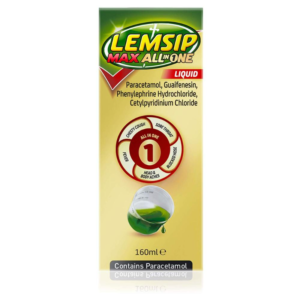
Lemsip Max All In One Liquid Syrup – 160ml
- For The Relief Of Coughs & Colds
- Active Ingredients: Paracetamol, Phenylephrine, Guaifenesin & Cetylpyridinium
- Buy With Confidence From UK Registered Pharmacy
£8.49 Read more -

Deep Freeze Glide-on Gel 50g
- Soothing To Joints & Muscles
- Easy To Use Glide-on Gel
- Buy With Confidence From UK Registered Pharmacy
£5.99 Add to basket -

Nurofen Sinus & Blocked Nose 200mg/5mg Tablets – 16 Tablets
- For The Relief Of Flu & Colds
- Active Ingredients: Phenylephrine & Ibuprofen
- Buy With Confidence From UK Registered Pharmacy
£6.69 Read more -
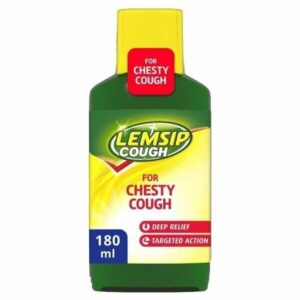
Lemsip Cough Chesty Syrup – 180ml
- For The Deep Relief Of A Chesty Cough
- Active Ingredient: Guaifenesin
- Buy With Confidence From UK Registered Pharmacy
£9.99 Read more -

Voltarol Back and Muscle Pain Relief 1.16% Gel with No Mess Applicator
- Contains a non-steroidal anti-inflammatory drug (NSAID) called diclofenac
- Targets pain at its source
- For targeted local relief for pain and swelling in muscles, back and neck, as well as sprains, strains and bruises
£13.95 Add to basket -

Ultra Chloraseptic Blackcurrant Throat Spray 15ml
- Active Ingredient: Benzocaine
- Numbs Pain Fast
- Contains 100 Sprays
£4.79 Select options -

Ultra Chloraseptic Honey & Lemon Throat Spray 15ml
- Active Ingredient: Benzocaine
- Numbs Pain Fast
- Contains 100 Sprays
£4.79 Select options -

Ultra Chloraseptic Menthol Throat Spray 15ml
- Active Ingredient: Benzocaine
- Numbs Pain Fast
- Contains 100 Sprays
£4.79 Select options -

Buttercup Bronchostop Junior Cough Syrup – 120ml
- For The Relief Of A Cough
- Traditional Herbal Medicine
- Buy With Confidence From UK Registered Pharmacy
£6.99 Add to basket -
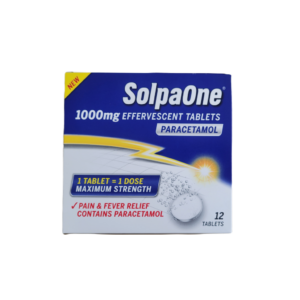
SolpaOne 1000mg Effervescent Tablets – 12 Tablets
- Gets to work up to 2x faster than regular paracetamol
- Easy to swallow effervescent format
- Maximum dose in a single tablet
£5.50 Select options -

Ibuleve 5% Ibuprofen Gel – 100g
- Penetrating gel for fast local relief of pain
- Apply directly to the point of pain
- Clear, pleasant-to-use, fragrance-free formula
£10.99 Add to basket -

Motusol 1.16% Diclofenac Gel – 30g
- Diclofenac 1.16% (as diclofenac diethylamine)
- Targeted pain relief of acute strains and sprains
- For adults and adolescents aged 14 years and over
£4.69 Add to basket -

Vocalzone Throat Pastilles Honey & Lemon – 24 Pack
- Soothes and clears, helps keep a clear voice
- Relieves throat from irritation
- Contains powerful active ingredients
£4.79 Add to basket -

Ibuleve 5% Ibuprofen Gel – 30g
- Penetrating gel for fast local relief of pain
- Apply directly to the point of pain
- Clear, pleasant-to-use, fragrance-free formula
£4.59 Add to basket -

Kool ‘n’ Soothe Kids Cooling Strips – 4 Strips
- Cooling Relief For a Fever
- Easy To Apply
- Non-Medicinal
£3.69 Add to basket -

Difflam Sore Throat Rinse – 300ml
- For the relief of pain and inflammation in the throat and mouth
- To be rinsed or gargled
- Active Ingredient: Benzydamine Hydrochloride
£11.99 Select options -

-

Ibuleve 5% Ibuprofen Gel – 50g
- Penetrating gel for fast local relief of pain
- Apply directly to the point of pain
- Clear, pleasant-to-use, fragrance-free formula
£6.49 Add to basket
-
About Over-the-Counter Pain Medication
Over the counter (OTC) pain medications are essential for managing minor aches, pains, and fevers without a prescription. When used as directed, they offer a convenient and effective solution for pain relief.
Types of Pain Relievers: The main types of OTC pain relievers are:
Paracetamol: Effective for fever reduction and pain relief, suitable for all ages, including children. It has fewer gastrointestinal side effects but should be used carefully to avoid exceeding the recommended dosage, as it can affect the liver.
NSAIDs (Nonsteroidal Anti-Inflammatory Drugs): These include ibuprofen, aspirin, and naproxen, which are effective in reducing inflammation, pain, and fever. Suitable for pain from inflammation, such as arthritis or muscle aches, but may cause gastrointestinal issues if not used properly.
Choosing the Right Medication: Selecting the appropriate pain reliever should consider the type of pain, any pre-existing health conditions, and other medications being taken. It’s essential to read labels carefully and consult with healthcare providers if you have conditions like liver or kidney disease, or if you are taking other prescription medications.Usage Tips: Always follow the recommended dosages on the packaging and be aware of any potential interactions with other medications you might be using. Consult a healthcare provider or pharmacist if you’re unsure about the best choice for your needs.
-
Symptoms
Over-the-counter (OTC) pain medications are commonly used for a variety of symptoms that signal mild to moderate pain, inflammation, or discomfort. Here are some common symptoms that might lead someone to consider taking OTC pain relief:
Headaches and Migraines: OTC pain relievers like ibuprofen and paracetamol are often effective for reducing the pain associated with headaches and migraines.
Menstrual Cramps: NSAIDs (Nonsteroidal Anti-Inflammatory Drugs) such as ibuprofen can be particularly effective in alleviating the pain and discomfort caused by menstrual cramps due to their anti-inflammatory properties.
Muscle Aches and Stiffness: After physical activity or due to minor injuries, muscle aches can occur. NSAIDs or paracetamol can help reduce these symptoms.
Arthritis Pain: For chronic conditions like arthritis, which involve joint pain and swelling, NSAIDs can be beneficial in managing daily discomfort.
Fever: Paracetamol is commonly used to reduce fever and alleviate the discomfort that comes with it.
Toothaches: Pain from dental issues can be temporarily managed with OTC pain relievers until professional treatment is obtained.
Post-surgical Pain: Following minor surgeries, doctors might recommend OTC pain medications to manage recovery pain.
Back Pain: For non-specific back pain that isn’t severe, OTC medications may provide relief.It’s important to select the appropriate type of pain reliever based on the symptoms and the underlying causes. For instance, NSAIDs reduce inflammation and are suitable for conditions like arthritis and menstrual cramps, while paracetamol is preferable for reducing fever and relieving pain without gastrointestinal side effects.
-
Diagnosis
The diagnosis of conditions requiring over-the-counter (OTC) pain relief generally starts with a thorough medical history and a physical exam. Health care providers assess symptoms and the history of any injuries or activities that might contribute to the pain.
Medical History and Symptoms Evaluation: During the initial consultation, the doctor will ask about the pain’s onset, duration, intensity, and characteristics. This includes whether the pain is sharp, dull, constant, or intermittent. Understanding previous medical conditions, ongoing health issues, and any recent injuries is crucial for an accurate diagnosis.
Physical Examination: The healthcare provider will examine the area of pain, assessing for any tenderness, swelling, or abnormalities. This might include checking the alignment, range of motion, and physical condition of affected areas, such as the neck, back, or joints.
Diagnostic Tests: While often not necessary for minor pain, imaging tests like X-rays, MRI, or CT scans may be used if a more serious condition is suspected, such as fractures, arthritis, or other internal issues. For example, X-rays can help reveal issues with bones and joints, while MRI provides a detailed image of soft tissues and nerves.
Additional Tests: In certain cases, especially if the pain is persistent or complex, additional tests might be recommended. These could include blood tests to check for markers of inflammation or infection, or specialized nerve function tests to diagnose conditions affecting the nervous system.
It’s important to consult with healthcare professionals to ensure an accurate diagnosis and appropriate management of any pain. Over-the-counter pain medications like NSAIDs or paracetamol are effective for many types of pain but should be used as directed to avoid potential side effects. For chronic or severe pain, a more detailed evaluation and tailored treatment plan may be necessary.
-
Treatments
Over-the-counter pain relief medications play a critical role in managing symptoms associated with mild to moderate pain. My Pharmacy offers a range of OTC options that can address various pain-related issues effectively:
Co-codamol 8mg/500mg Tablets – This medication combines codeine phosphate and paracetamol to provide relief for acute moderate pain. It’s suitable for short-term use due to its opioid content, which can cause addiction if used long-term. It’s especially useful for pain that isn’t relieved by other analgesics like paracetamol or ibuprofen alone.
Ibuprofen Tablets – A non-steroidal anti-inflammatory drug (NSAID), ibuprofen is commonly used to relieve mild to moderate pain. It can also reduce high temperatures (fever) and inflammation, making it a versatile choice for a variety of conditions, such as headaches, menstrual cramps, dental pain, and muscle aches.
Nurofen Plus Tablets – Containing both codeine phosphate and ibuprofen, this medication has a dual-action formula that works to relieve pain and inflammation. It’s potent for conditions where inflammation contributes to the pain, such as in some types of arthritis. Due to the codeine content, it is recommended for use for no more than three days.
Solpadeine Max Tablets – These are formulated for fast-acting relief from acute moderate pain. Containing both paracetamol and codeine, they provide a strong pain relief option for when standard painkillers do not suffice. Like Co-codamol, due to the risk of addiction, it’s advised to use Solpadeine Max for short periods.
Over the counter medications offer effective relief for temporary pain, helping you to return to your daily activities with reduced discomfort. It’s important to adhere to the recommended dosages and to be aware of the potential risks, especially concerning the opioid content in some medications, which can lead to dependency if used long-term.
-
Prevention Strategies
Preventing pain and managing symptoms effectively often involves a combination of lifestyle adjustments and proactive measures. Here are several strategies to help prevent and cope with pain symptoms:
Regular Exercise and Movement Therapy: Engaging in physical activity can alleviate certain types of pain. Activities such as stretching, yoga, or tai chi can increase flexibility and strength, reducing the risk of pain caused by muscular tension and joint issues. For those with chronic pain, working with a physical or occupational therapist can provide tailored exercises that gradually retrain the body without exacerbating symptoms.
Mindfulness and Relaxation Techniques: Incorporating mindfulness practices such as meditation or focused breathing can help manage the stress that often exacerbates the experience of pain. These techniques can promote relaxation and ease mental and emotional contributions to pain.
Good Sleep Hygiene: Quality sleep is crucial for pain prevention and recovery. Establishing regular sleep patterns and ensuring a comfortable sleeping environment can significantly impact pain management.
Healthy Diet: A balanced diet that is low in processed foods and rich in fruits, vegetables, whole grains, and lean proteins can help maintain overall health and prevent conditions associated with pain, such as inflammation.
Proper Hydration: Staying hydrated is important for overall bodily functions and can also help reduce some types of pain, such as headaches or cramps.
Stress Management: Since stress can intensify the perception of pain, employing stress management techniques, such as setting achievable goals, practicing gratitude, and staying positive, is essential.
Moderation and Pacing: For those with chronic pain, it’s important to avoid overexertion. Setting realistic goals and taking regular breaks during activities can prevent pain flare-ups.
Avoiding Injuries in Sports: Proper warm-ups and cool-downs, using the correct technique, wearing appropriate safety gear, and listening to your body can prevent sports-related injuries that cause pain.
Preventative Healthcare: Regular check-ups can help manage health conditions that may lead to pain and provide an opportunity to discuss any early symptoms of pain with a healthcare provider.Each individual’s situation is unique, so it’s important to find the combination of strategies that works best for you. Remember that it’s always wise to consult with a healthcare professional before starting any new health regimen.












